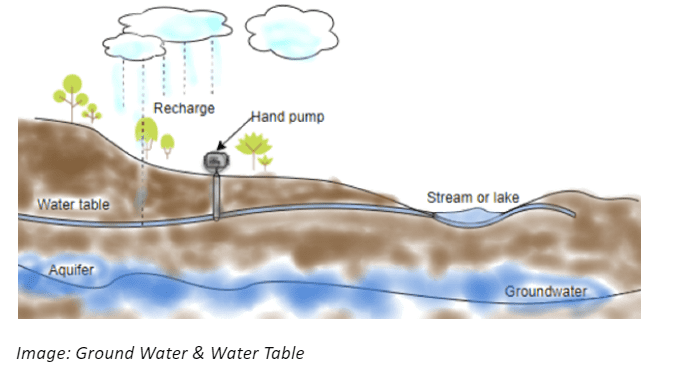Water: A Precious Resource Class 7 Questions and Answers - Free PDF Download
FAQs on NCERT Solutions For Class 7 Science Chapter 16 Water: A Precious Resource - 2025-26
1. Why is water considered a precious resource according to NCERT Class 7 Science Chapter 16?
Water is considered a precious resource because all living organisms, including plants and animals, require it for survival. Although Earth is covered by about 71% water, only a tiny fraction (about 0.006%) is available and fit for human use. It is essential for agriculture, domestic chores, and industrial processes. As per the NCERT solutions, the limited availability of usable freshwater makes every drop precious.
2. How should one explain the process of groundwater recharge using the concept of infiltration as given in the NCERT solutions?
To explain groundwater recharge, you should follow these steps as per the NCERT methodology:
1. Start with the source: Rainwater and water from other sources like rivers and ponds.
2. Describe the action: This water seeps into the ground through the soil.
3. Define the process: This seeping of water into the ground is called infiltration.
4. State the result: The infiltrated water fills the empty spaces and cracks deep below the ground, thus recharging the groundwater.
3. What is the water table, and what are the main causes for its depletion as listed in Chapter 16?
The water table is the upper level of the underground layer where the soil and rock are saturated with water. According to the NCERT Class 7 Science textbook, the primary factors causing the depletion of the water table are:
- Increasing Population: Higher demand for drinking water and sanitation.
- Industrialisation: A vast amount of water is used in almost all industries.
- Agricultural Activities: Increased irrigation to feed the growing population heavily relies on groundwater.
- Deforestation: Fewer trees lead to reduced seepage of rainwater into the ground.
4. What are the key effects of water scarcity on plants, as detailed in the NCERT textbook?
The NCERT textbook highlights that water scarcity severely affects plants. Without sufficient water, plants cannot get essential nutrients from the soil. This leads to several adverse effects:
- Plants will wilt and eventually dry up.
- The process of photosynthesis, by which plants make their food, is hampered, as water is a key raw material.
- A permanent water shortage can cause green areas to turn into deserts, a process known as desertification.
5. According to the NCERT solutions, what are the different forms in which water exists on Earth?
The NCERT solutions for Chapter 16 explain that water exists on Earth in three forms, maintained by the water cycle:
- Solid: Found as ice and snow in ice caps, glaciers, and on snow-covered mountains.
- Liquid: Found in oceans, rivers, lakes, and as groundwater.
- Gas (Vapour): Exists as water vapour in the air around us.
6. Why is drip irrigation highlighted as an effective water management technique in the NCERT solutions for this chapter?
Drip irrigation is highlighted as a superior water management technique because of its high efficiency. Unlike traditional methods, it is a technique of watering plants by making use of a network of narrow pipes with small holes. It delivers water directly to the base or roots of the plants, which ensures:
- Minimal water loss due to evaporation.
- Water is used exactly where it is needed, preventing wastage.
- It is a boon in regions with acute water scarcity, allowing agriculture to thrive with less water.
7. What is the correct step-by-step method to solve a question about drawing and explaining the water cycle as per the CBSE pattern?
To correctly solve a question on the water cycle for full marks, follow this method:
1. Draw a Clear Diagram: Sketch a neat diagram showing a water body, clouds, sun, and land with trees.
2. Label Key Processes: Use arrows to show the flow and clearly label the four main processes: Evaporation, Condensation, Precipitation, and Infiltration/Collection.
3. Explain Each Step: Briefly write one sentence explaining each labelled process. For example, 'Evaporation is the process where water turns into vapour due to heat.'
4. Concluding Statement: End by stating that the water cycle is a continuous process that circulates water on Earth.
8. How can understanding the difference between the 'water table' and an 'aquifer' help in accurately answering questions from this chapter?
Understanding the distinction is crucial for precise answers. The water table is simply the upper surface of the groundwater. In contrast, an aquifer is the entire underground layer of rock or sediment that holds the groundwater. We extract water using handpumps and tubewells from aquifers. Knowing this helps to accurately explain that over-extraction from an aquifer leads to the lowering of the water table. This precision is key for scoring well in exam questions related to groundwater depletion.
9. How do Vedantu's NCERT Solutions for Class 7 Science Chapter 16 aid in exam preparation for the 2025-26 session?
Vedantu's NCERT Solutions for Chapter 16 are specifically designed to help students prepare for the 2025-26 exams by:
- Providing accurate and step-by-step answers to every question in the NCERT textbook.
- Explaining core concepts like the water cycle, aquifers, and water management in a simple, easy-to-understand manner.
- Ensuring all solutions are aligned with the latest CBSE curriculum and guidelines.
- Helping students learn the correct format and keywords to use when writing answers in their exams to secure better marks.
























